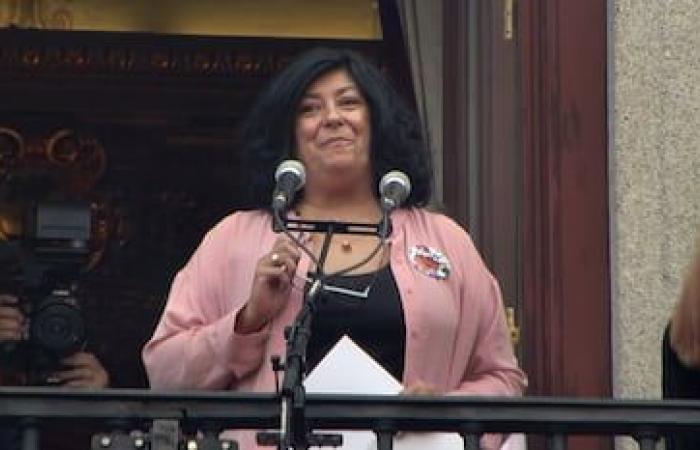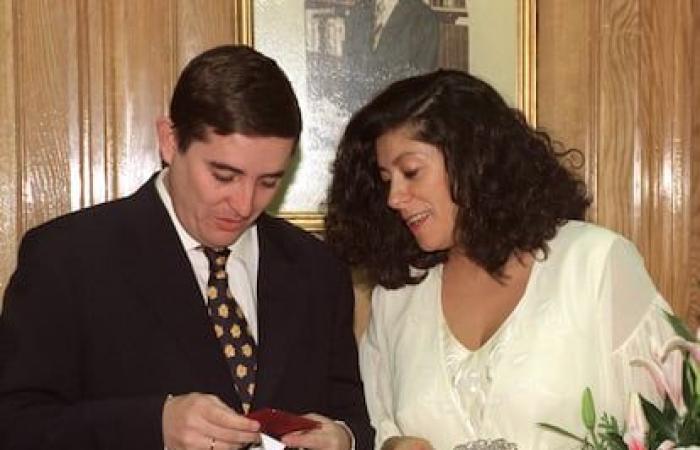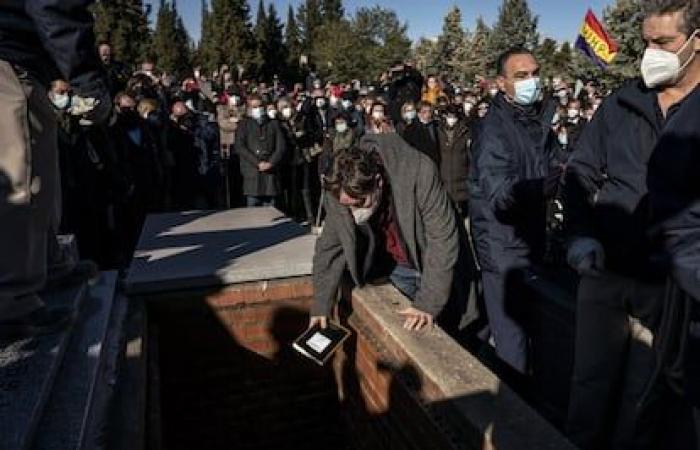A tremor … for those who knew her closely, the powerful presence in Image of Almudena Grandes (Madrid 1960-2021) as soon as he appears on the screen within the documentary dedicated by Azucena Rodríguez produces neither more nor less than that: a tremor. Immediately, their hoarse voice returns to life, the smile split by the two upper incisive teeth, their viscerally Moreno charism, the passionate drag that ignited who heard it to tell what he had read or written at any time, his pertinent identification theories with heroes such as Ulysses or with the patience of Penelope, with the Galdian adventures and his more than pertinent parallel between the pertinent parallel literature and kitchen.
And, above all, that contagious joy, that head of self -examination when demanding justice for our ravings, but never from resentment, always against hatred, with the luminous flag of joy.
It is one of the words that already defined it already that their children, Mauro, Irene and Elisa, or her husband, the poet Luis García Montero, and his best friends, despite the sadness that their absence produces, have been imposed as a loyalty to remember it and keep their legacy alive. And it is the emotion that mainly says goodbye ALMUDENthe documentary that opens on May 14 in Cinemas, produced by Gerardo Herrero and Mariela Besuievsky, who used to adapt their novels to the screen. “Not a trace of sadness in memory, that is what serves to do justice,” says Rodríguez.
“Almudena saw in joy a form of resistance,” says García Montero. For the poet, happiness is a word that contains a certain superb. “The enlightened social contract is done around public happiness. But who has eyes to look at reality cannot identify much with it because there are people who suffer constantly. However, the word joy can become that mood stuck to the skin of people willing to fight for the improvement of the world, even if we see cracks in it. I believe that Almudena was aware of that.”
And applied it at home and on the street. “I knew the seriousness of his illness. But when he was sure to get ahead he maintained a positive attitude that was a way of taking care of our children and me. To protect us. I understood then that joy in it became a vital strategy to continue resisting.”
That is why those who wanted it do not renounce that expansive wave. “It is the best mood to remember among us. A way to take care of it,” says García Montero. And the best strategy also to make it known among those who have not yet reached their work and what it represented. To do this, Rodríguez has also wanted to focus on the creative process. She began to roll it in life and fullness of the author, when the cancer that ended her life in November 2021 had not yet been diagnosed. “I started to account for her category as a creator,” says the filmmaker. “He has a huge dimension as a writer capable of connecting with thousands of people around the world. I wanted her to tell me her work process, I was fascinated to attend that.”
But pandemic, disease and death arrived. That blow disrupted the director’s plans, but Herrero and Besuievsky encouraged him to finish it. “I was very impressed to sit down to see those images. However, the cinema has the virtue that through yours we can laugh a little of death. That possibility of being able to make her present again, that those who know her see her and those who do not approach her for the first time encouraged me, when I still give me a lot of absence,” confesses her friend. “I see her on screen and impress me, but I calm down. In the assembly it cost me, I had to stop often to continue. In spite of everything, I comfort me, I’m glad to look at her, she has such power …”.
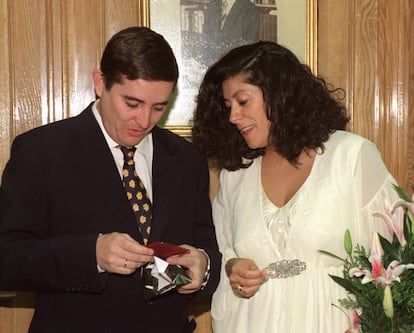
From there, the review that mostly great and his family make about his own career marks the documentary. From an childhood with literature fond of literature to the times when the alarm sounded at five in the morning to, before taking his son Mauro to school and then going to work at the Anaya publishing house, he was spreading the hours for the writing of his first novel, The ages of Lulu. That work released his career with the vertical smile award in 1989, and years later, Mario Vargas Llosa said he had been a milestone to tell the Spanish transition. Great handled its first success with intelligence. From there she decided what kind of writer she wanted to be until she became a fundamental author in Spanish globally.
The choice of a faithful path to referents such as Benito Pérez Galdós explains an entire ethical and aesthetic philosophy in the author. “That commitment to be understood, finds it in ultranza defense that she or other writers such as Antonio Muñoz Molina do in the 1990s of Galdós,” says García Montero. “They do not want to condemn the idea that good literature and quality have to do with the difficulty, or to break the contact with the reader. When they carry it out they begin an act of rebellion, especially because they do it at a time when everything blew against. But readers recognize it.” That is why and for that popular aura, his continuous presence is so present in the name of the streets or libraries that dedicate him and even at the Atocha station today renamed his honor.
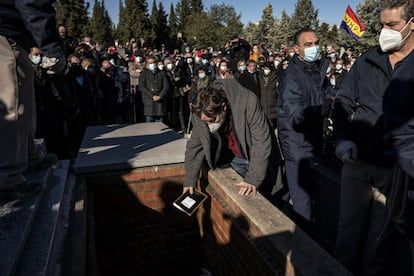
The readers also became, neither more nor less, “in the redoubt of their freedom,” says Azucena Rodríguez. He was faithful to the same editorial seal all his life, Tusquets, precisely because he knew that he built his own community of faithful readers without misleading them. A community that followed it and was increasing based on a solid career, with measured but risky steps and took it from The ages of Lulu o I’ll call you Friday, Malena is a tango name y Human Geography Atlas To others like The difficult airs o The ice creamin which he achieved his challenge of plotting a work of a thousand pages. He did not stay there and continued in the line open by that fundamental novel to build his series Episodes of an endless war. He had projected six novels, but finished five: Inés and La Alegría, the reader of Julio Verne, the three weddings of Manolita, the patients of Doctor Garcia y Frankenstein’s mother. The one that was going to be titled Mariano in the Bidasoa It was unfinished.
The first stage of his career portrays with joy, but also between crossroads of pain and failures, according to García Montero, “the rescue of the sentimental education of women at the end of Franco, which made them evolve collectively from the closed approaches of the Women’s Section of Pilar Primo de Rivera.” In the second, since The ice cream To the episodes, penetrates the trauma of war and dictatorship. It becomes a basic reference as a writer of memory.
He could not finish that project that took him more than a decade, but what he managed to undertake is. It maintains its success and connection with new readers who continue to respond. You just have to see the recent exit of your articles gathered in the volume Interior staircase. He has four editions and oozes the daily life of his open Madriñelismo, heir to the air of the Second Republic, but also to this present in which he liked the new skin colors and varied accents, as he claimed in his proclamation to the festivities of San Isidro of 2018.
Galdós’ breath
These last novels were drawn for the 21st century with the breath that Galdós had left with his and his National Episodes in the XIX and the XX. They built loyal to those who suffer from the story, who are forced to deal with it, survive it and, even so, as far as possible, to leave traces of goodness and beauty in the face of evil and violence that lurks and envelops them.
She had to address it in fullness and free during the luminous period in our history. Enjoying your vocation as much as your family and friends. Also delivered to the art of the kitchen and other passions, to eclectic readings that went from great classics and their obsession by Homer to Stephen King or the saga Game of Throneswho commented with his children, together with those who also shared fervor for Atlético de Madrid. He lacked to make a meal with Cholo Simeone, but he certainly felt that minute of silence that rumbled in the Metropolitan after his death.


